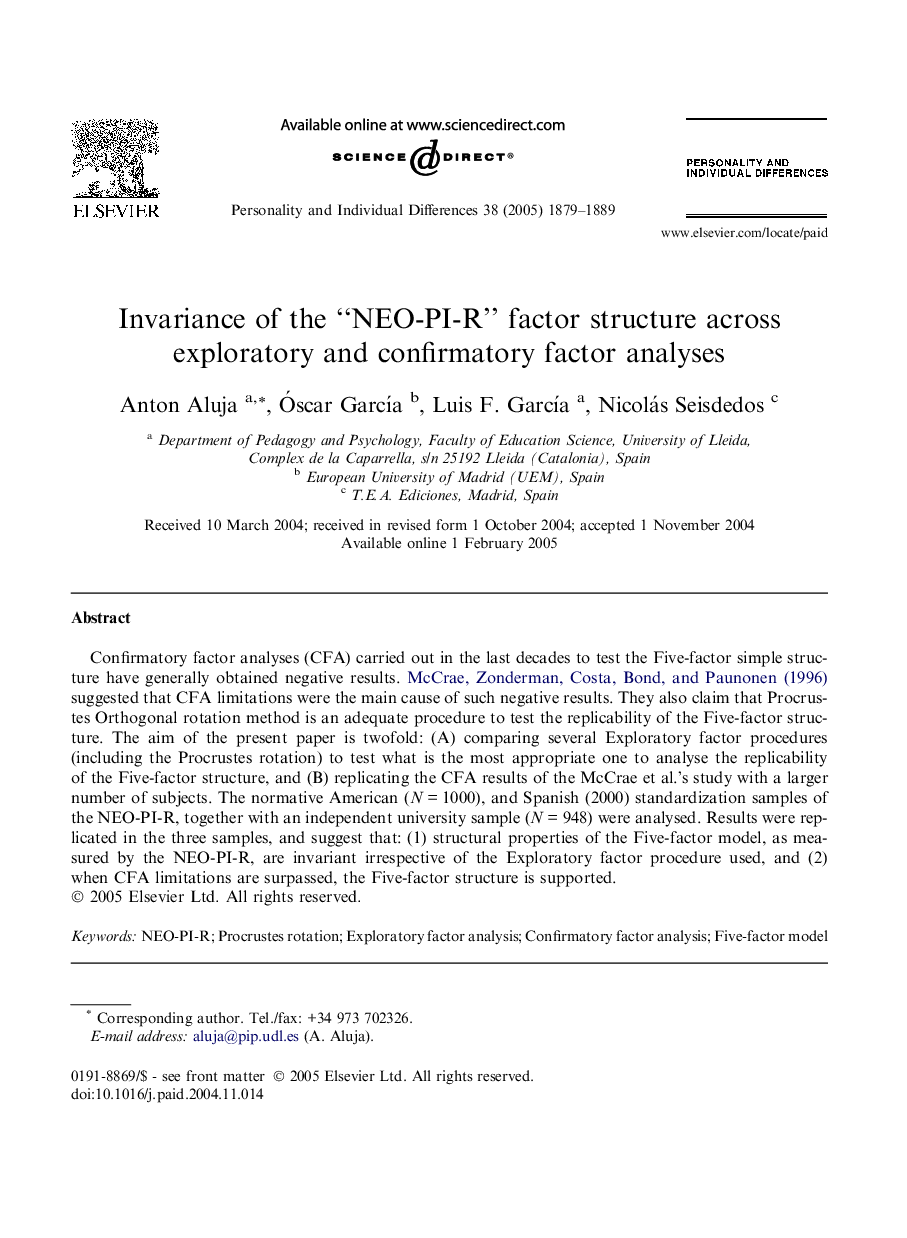| Article ID | Journal | Published Year | Pages | File Type |
|---|---|---|---|---|
| 10440668 | Personality and Individual Differences | 2005 | 11 Pages |
Abstract
Confirmatory factor analyses (CFA) carried out in the last decades to test the Five-factor simple structure have generally obtained negative results. McCrae, Zonderman, Costa, Bond, and Paunonen (1996) suggested that CFA limitations were the main cause of such negative results. They also claim that Procrustes Orthogonal rotation method is an adequate procedure to test the replicability of the Five-factor structure. The aim of the present paper is twofold: (A) comparing several Exploratory factor procedures (including the Procrustes rotation) to test what is the most appropriate one to analyse the replicability of the Five-factor structure, and (B) replicating the CFA results of the McCrae et al.'s study with a larger number of subjects. The normative American (NÂ =Â 1000), and Spanish (2000) standardization samples of the NEO-PI-R, together with an independent university sample (NÂ =Â 948) were analysed. Results were replicated in the three samples, and suggest that: (1) structural properties of the Five-factor model, as measured by the NEO-PI-R, are invariant irrespective of the Exploratory factor procedure used, and (2) when CFA limitations are surpassed, the Five-factor structure is supported.
Keywords
Related Topics
Life Sciences
Neuroscience
Behavioral Neuroscience
Authors
Anton Aluja, Ãscar GarcÃa, Luis F. GarcÃa, Nicolás Seisdedos,
